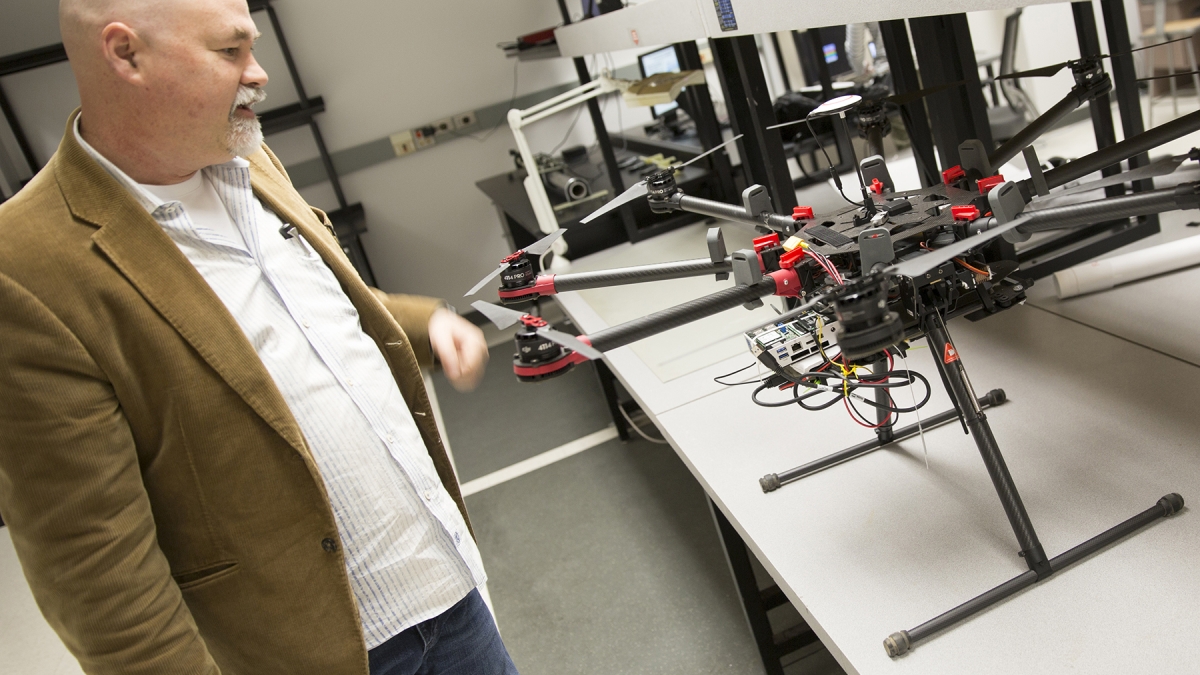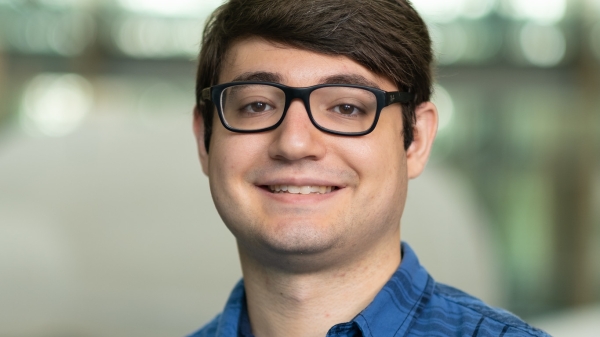New wireless infrastructure needed for Puerto Rico, other disaster-struck areas
We must change the way communications systems operate, says ASU professor

According to a Federal Communications Commission status report issued last week following a survey of Hurricane Maria damage, nearly 50 percent of Puerto Rico’s cell sites remain out of service, with many counties operating at less than 25 percent of full service.
Daniel BlissBliss is an associate professor in the Ira A. Fulton Schools of Engineering at Arizona State University, where he serves as the director of the Center for Wireless Information Systems and Computational Architectures (WISCA), director of the Center for Wireless Information Systems and Computational Architectures (WISCA) at Arizona State University, offers insights about building a wireless infrastructure with the capacity to provide immediate, ongoing communications access during emergency situations.
Bliss emphasizes growing urgency based on the trifecta of increased populations near potentially affected areas, increased dramatic events due to climate change, and increased reliance on communications by both emergency responders and the general public.
Question: Aside from restoring power to wireless providers, what other measures are needed to ensure uninterrupted wireless communications in Puerto Rico and disaster-struck regions in the future?
Answer: The economic model of current wireless systems is tuned to reasonably high-density, affluent regions with well-supported infrastructure. When a disaster strikes, the region is transformed into one that does not satisfy these criteria.
Because there is no strong economic motivation to solve these problems, access to the wireless spectrum should come with specific mandates to carriers — like the Emergency Alert System (EAS) that requires radio and television networks to serve as a public warning system during emergencies. Basic emergency access should be a fundamental licensing component for a carrier’s operation within a region.
Q: What kinds of wireless infrastructure could have prevented a total communications outage in Puerto Rico?
A: Carriers currently have the ability to set up temporary cellular base stations. Interesting extensions to this concept include the Google Loon System, which puts base stations on balloons, and AT&T’s Flying COW (Cell on Wings), which was deployed in Puerto Rico last week. However, these approaches are really just Band-Aids.
The best answer is to fundamentally change the way our wireless systems operate. Theoretically, we can trade communications range for data rate. For example, a cat video requires a data rate that is at least 10,000 times larger than a text message. But in an emergency, all you might need is a text message.
If our communications systems and equipment were sufficiently flexible to switch to a lower data rate with a longer communications range, a sparse subset of operating base stations could support a region during a disaster.
These ideas motivate our efforts at ASU’s WISCA. We investigate fluid wireless systems to address our dynamic needs, including emergencies scenarios. Our efforts include the development of theory, algorithms, computational architectures and actual integrated circuits required to efficiently and cost effectively implement these systems.
Q: Are there overall advantages to similar wireless infrastructures that extend beyond remote areas that aren’t connected to a major communications or power grid?
A: If we provide the capabilities and tools to implement fluid communications systems, we could also address the needs of a much wider range of users. Currently, less affluent and lower density users are often ignored. The cost of the infrastructure, and even the handsets, are prohibitive.
But if we stop setting the communications requirement to be multiple, simultaneous, high-definition cat videos, we can provide service to communities that are currently ignored, potentially providing much wider access to information for poorer communities.
Q: Where do you see wireless technology headed in the next three-to-five years?
A: We are seeing the commercial development of computational architectures that live in our phones and base stations that could support more flexible communications. However, the standards and employment of these capabilities is driven by profitability.
One reason for optimism is that current interest in the internet of things (IoT) is motivating more flexible communications. While I do not think that I need my toaster to be connected to the internet, the increased flexibility could have broader impact.
If we tweak the goals, the next generation of communications could be more robust in the case of emergencies and, as a side benefit, provide more access to a wider range of users, including those who are currently underserved.
For this to happen, we need to push for changes in both technical and regulatory fields. It will not happen otherwise.
Top photo: Associate Professor Daniel Bliss with an unmanned aerial system (UAS) optocopter used for WISCA research.
More Science and technology

Securing the wireless spectrum
The number of devices using wireless communications networks for telephone calls, texting, data and more has grown from 336 million in 2013 to 523 million in 2022, according to data from U.S.…

Materials science expert joins ASU to solve problems using curiosity, interdisciplinary collaboration
Jason Khoury, assistant professor in the School of Molecular Sciences and the Navrotsky-Eyring Center for Materials of the Universe, brings a passion for understanding why compounds have specific…

ASU author puts the fun in preparing for the apocalypse
The idea of an apocalypse was once only the stuff of science fiction — like in “Dawn of the Dead” or “I Am Legend.” However these days, amid escalating global conflicts and the prospect of a nuclear…